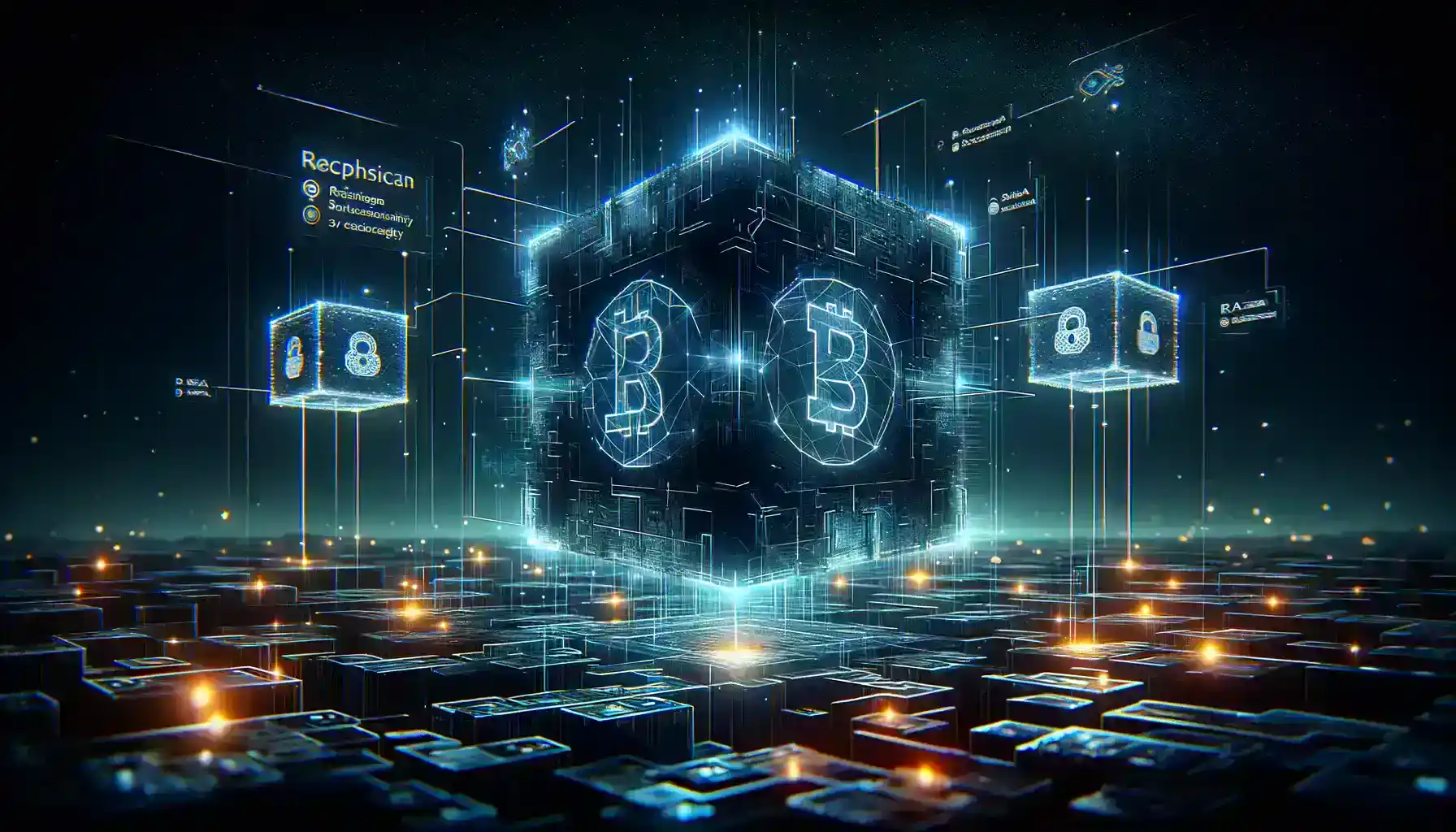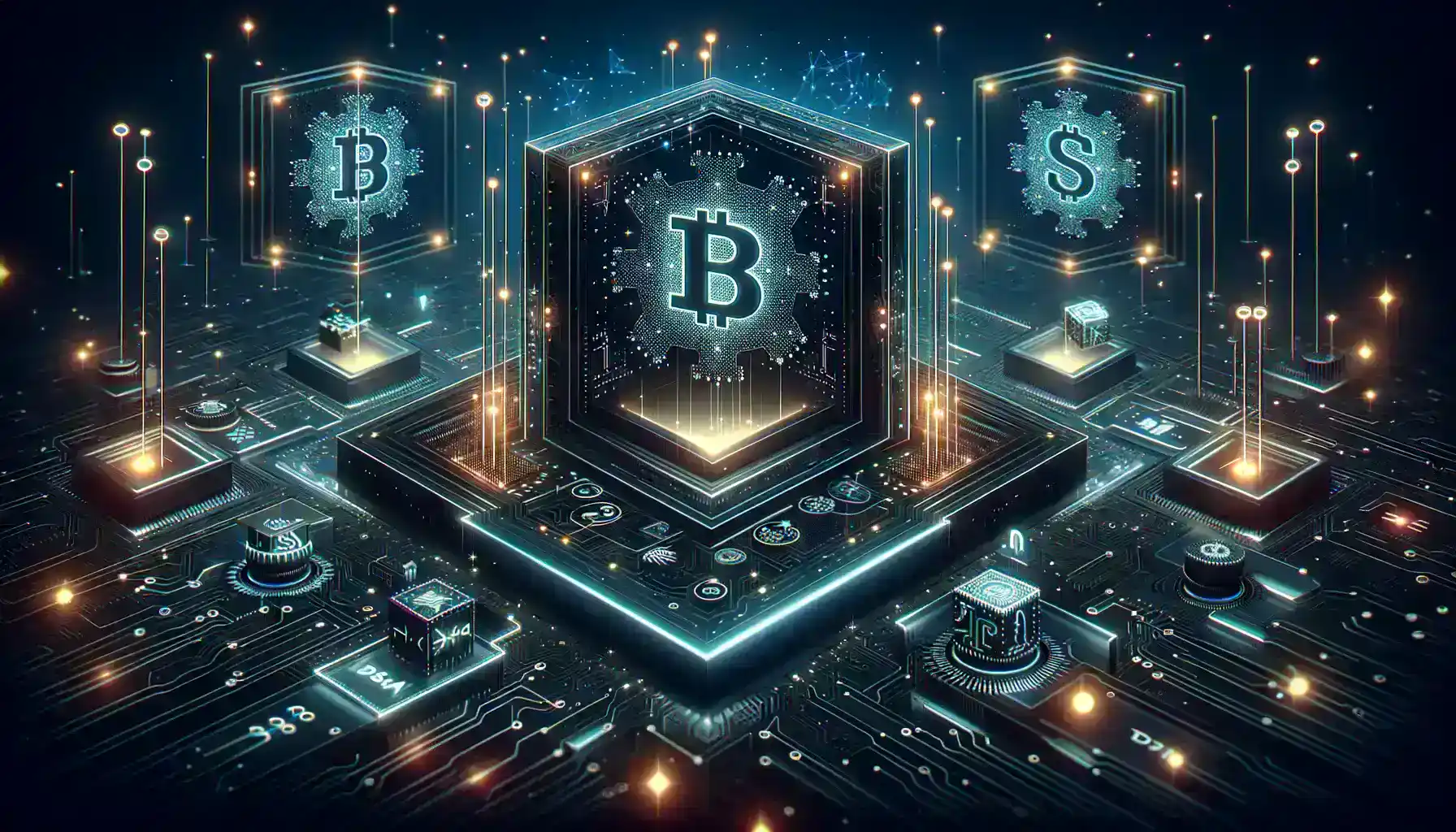Table of Contents
Blockchain technology has emerged as a transformative force in the digital age, reshaping the way we conduct transactions, manage data, and fortify security across various industries. It has become an indispensable pillar supporting finance, healthcare, supply chain, and more.
However, in this era of increasing cyber threats, ensuring the security of blockchain networks has assumed paramount importance to preserve trust and reliability.
In this article, we delve into the pivotal roles played by two cryptographic juggernauts, RSA (Rivest-Shamir-Adleman) and DSA (Digital Signature Algorithm), in bolstering the security of blockchain technology.

The Rise of Blockchain Technology
Before delving into the cryptographic intricacies, let’s briefly recount the meteoric rise of blockchain technology. Originally conceived as the underpinning for the cryptocurrency Bitcoin, blockchain has transcended its cryptocurrency roots to offer a versatile, decentralized ledger that can be employed in a plethora of applications.
Its inherent qualities of transparency, immutability, and security have made it an irresistible choice for industries seeking enhanced trust and efficiency in their operations. Within this transformative landscape, cryptographic giants RSA and DSA play pivotal roles in fortifying blockchain’s security infrastructure.
The Imperative of Blockchain Security
Blockchain’s immutable nature and decentralized architecture make it inherently secure against many traditional forms of cyberattacks. However, the evolving sophistication of cyber threats necessitates a multifaceted approach to security. This is where cryptographic algorithms like RSA and DSA come into play, providing the cryptographic underpinnings that fortify the security of blockchain networks.
RSA in Blockchain
RSA (Rivest-Shamir-Adleman) is a well-known asymmetric encryption algorithm that plays a crucial role in enhancing the security of blockchain technology. In the context of blockchain, RSA is utilized in several key aspects:

- Digital Signatures: One of the primary uses of RSA in blockchain is for creating digital signatures. When a user initiates a transaction on a blockchain network, their private key, which is kept secret, is used to generate a unique digital signature for that transaction. This digital signature serves as cryptographic proof of the transaction’s authenticity and integrity.
- Transaction Verification: Other participants or nodes on the blockchain network can verify the validity of a transaction by using the sender’s public key, which is associated with their wallet address. By applying the sender’s public key to the digital signature, anyone can confirm that the transaction was initiated by the owner of the private key, thus ensuring the security and trustworthiness of the transaction.
- Key Pair Generation: RSA is responsible for generating key pairs within the blockchain ecosystem. Each participant in the network has a unique pair of keys: a public key, which is openly shared with others, and a private key, which is kept confidential. These keys are generated using the RSA algorithm. The public key is used for encryption and verification, while the private key is used for decryption and signing transactions.
- Identity Verification: RSA-based public keys also serve as a means of identity verification on the blockchain. Users can verify the identity of others by checking the public key associated with their wallet address. This helps prevent impersonation and fraudulent activities on the network, as the private key is required to generate valid digital signatures.
- Secure Communication: RSA is used for secure communication between participants in the blockchain network. When sensitive information needs to be exchanged, it can be encrypted with the recipient’s public key, ensuring that only the recipient, who possesses the corresponding private key, can decrypt and access the data.
In summary, RSA is a critical component of blockchain technology, providing a robust mechanism for creating digital signatures, verifying transactions, managing key pairs, verifying identities, and enabling secure communication.
Its asymmetric nature, with separate public and private keys, ensures the confidentiality and integrity of data on the blockchain while allowing for transparent and secure transactions.
DSA in Blockchain
DSA (Digital Signature Algorithm) is another cryptographic algorithm that plays a significant role in enhancing the security of blockchain technology, particularly in the context of creating and verifying digital signatures. Here’s how DSA enhances blockchain security:

- Efficient Digital Signatures: DSA is known for its efficiency in generating digital signatures. In a blockchain network, where thousands of transactions occur every second, efficiency is crucial to maintaining network performance. DSA’s efficiency ensures that transaction signing and verification processes are swift, contributing to the overall speed of the blockchain.
- Reduced Computational Overhead: DSA is designed with reduced computational overhead in mind. This characteristic makes it well-suited for resource-constrained blockchain environments. In blockchain networks, especially those relying on proof-of-work (PoW) or proof-of-stake (PoS) consensus mechanisms, computational efficiency is essential to reduce energy consumption and increase scalability. DSA’s efficiency results in lower computational costs when compared to some other cryptographic algorithms.
- Strong Security Guarantees: DSA provides strong security guarantees, making it highly resistant to various cryptographic attacks. This is vital in ensuring the integrity and authenticity of transactions and data stored on the blockchain. DSA’s security features protect against fraudulent activities, data tampering, and unauthorized access.
- Cryptographic Independence: DSA operates independently of the RSA algorithm. While RSA relies on the factorization of large numbers for security, DSA uses discrete logarithms in a finite field, making it an alternative approach to achieving cryptographic security. This cryptographic independence is advantageous for diversifying security measures within a blockchain network.
- Enhanced Resistance to Quantum Attacks: DSA’s reliance on discrete logarithms makes it more resistant to quantum computing attacks compared to some other cryptographic algorithms. As quantum computing advances, cryptographic algorithms that are resilient to quantum attacks become increasingly important for long-term security in blockchain and other digital systems.
- Simplified Key Management: DSA’s structure simplifies key management in blockchain networks. It enables users to generate and manage key pairs efficiently, reducing the complexity associated with cryptographic key management. This simplicity can be particularly valuable in blockchain applications where user-friendliness and ease of use are priorities.
In summary, DSA enhances blockchain security by offering efficient digital signatures, reducing computational overhead, providing strong security guarantees, and offering resistance to quantum attacks. Its efficiency and security benefits make it a valuable choice for transaction signing within blockchain networks, contributing to the overall trustworthiness and robustness of blockchain technology.
Combining RSA and DSA for Enhanced Security
Combining RSA and DSA in blockchain networks is a strategic approach to enhance security while optimizing performance. Here are some ways in which blockchain networks utilize a combination of these two cryptographic algorithms:
- Key Management and Identity Verification: RSA is often used for key pair generation and identity verification, as it excels in these areas. Users generate their public and private keys using RSA, and their public keys serve as unique identifiers on the blockchain. This ensures secure access to the network and verifies the identity of participants.
- Digital Signature Generation: DSA is preferred for transaction signing due to its efficiency and reduced computational overhead. When a user initiates a transaction, they use their private key (generated with RSA) to create a digital signature using DSA. This signature is appended to the transaction data, ensuring its integrity.
- Transaction Verification: Other participants on the blockchain network can then verify the transaction’s authenticity by using the sender’s RSA public key (associated with their identity) to confirm the sender’s identity. They can also use the DSA digital signature to verify the transaction’s integrity. This dual-checking process enhances security and trust in the network.
- Hybrid Approaches: Some blockchain platforms implement hybrid approaches that leverage both RSA and DSA at different stages of the blockchain protocol. For instance, RSA may be used during initial key pair generation and identity verification, while DSA is utilized for subsequent transaction signing and verification. This hybrid model optimizes security and performance.
- Quantum-Resistant Security: Combining RSA and DSA can also help enhance quantum-resistant security in blockchain networks. As quantum computing advances, RSA may become more vulnerable to attacks. By incorporating DSA, which is more resistant to quantum attacks, blockchain networks can future-proof their security infrastructure.
- Flexible Security Models: The combination of RSA and DSA allows blockchain networks to tailor their security models to specific requirements. For instance, in highly performance-sensitive applications, DSA can be used more extensively for faster transaction processing, while RSA remains essential for user identity and key management.
- Migration Strategies: In cases where blockchain networks are transitioning from one cryptographic algorithm to another (e.g., from RSA to post-quantum cryptography), a combination of RSA and DSA can be used as an interim solution. This allows for a gradual migration while maintaining security.
Conclusion
In the ever-evolving landscape of blockchain technology, RSA and DSA emerge as stalwart guardians of security. RSA excels in key management and identity verification, while DSA’s efficiency and security attributes make it the go-to choice for transaction signing.
By orchestrating the harmonious interplay of these cryptographic juggernauts, blockchain developers can construct secure, high-performance networks, ensuring the integrity, trustworthiness, and longevity of this groundbreaking technology. As blockchain continues its ascent, RSA and DSA remain steadfast sentinels, fortifying their foundations against the relentless tide of cyber threats.
RSA and DSA are fundamental cryptographic algorithms that play a crucial role in enhancing the security of blockchain networks. While RSA excels in key management and identity verification, DSA’s efficiency and security benefits make it a valuable choice for transaction signing. By combining these two algorithms strategically, blockchain developers can create robust and secure blockchain platforms that can be used across various industries, paving the way for a more secure and trustworthy digital future





